Utilizing User-generated Content Across Platforms | With Examples
by Ana Gotter • December 6, 2022
No matter how outstanding your marketing team is, the best marketers and sales people you have for your brand are actually going to be happy, vocal customers. They send referrals your way, build trust in your brand, and can cause a big increase in sales. This can happen one-on-one, but it can also happen through user-generated content.
User-generated content (UGC) is one of the most powerful marketing tools any brand can have, and it can— and should!— be used across all platforms. In this post, we’re going to show you exactly how valuable it can be and why it’s vitally important to increase your sales.
What is User-Generated Content (UGC)?
User-generated content (commonly referred to as UGC) is any content that’s created and shared by your customers, and can include text reviews, social media posts with images, and YouTube unboxing or review videos – to name a few. Sometimes it’s shared on social media or review platforms, and in some cases users may submit it directly to you.
Example of UGC in action on ModCloth’s Instagram page:

Unlike most of the content you create for your brand, UGC is typically going to be shot on a mobile phone, it won’t be professionally edited or reviewed, and it will be organic. And here’s the best part: You can then share it yourself across multiple platforms to take advantage of all the benefits it has to offer. Crazy right?! It’s essentially free content that you can reuse time and time again thanks to your brand’s fans.
Why is User-Generated Content So Important?
UGC is so important because it’s widely trusted and highly valued.
It revolves around social proof. The vast majority of consumers — 87% — rely on recommendations from people like them when making purchase decisions, and a whopping 93% read online reviews before deciding whether to buy.
And considering that 84% of users trust online reviews as much as they trust a personal recommendation from a friend or family member, that’s some insane selling power. It’s no surprise, therefore, that 79% of people say UGC highly impacts their purchasing decisions.
As a marketing strategy, user generated content aims to meet the same basic goals as other strategies: Find more leads and increase brand awareness. You can also use it to build a lot of trust in your brand, because customers may partially believe what you say about your products or services but they’ll wholeheartedly believe what other customers are saying.
UGC should, therefore, be a vital part of your marketing strategy, especially when it comes to social media marketing.
Looking for a video recap? This sums it up well:
What’s The Difference Between UGC and Influencer Marketing?
UGC is content that’s created by your users— so what if those users are also influencers?
This is where things can be a bit murky.
UGC can come from influencers! It’s not uncommon for brands to pay influencers to create and share content about their brand, and they may even provide talking points or instructions (like to make sure they get a great shot of that unboxing).
Most users, however, do see organic UGC and influencer content as two different things. They know that influencers are getting paid to promote your brand, especially since influencers are required to disclose paid sponsorships.
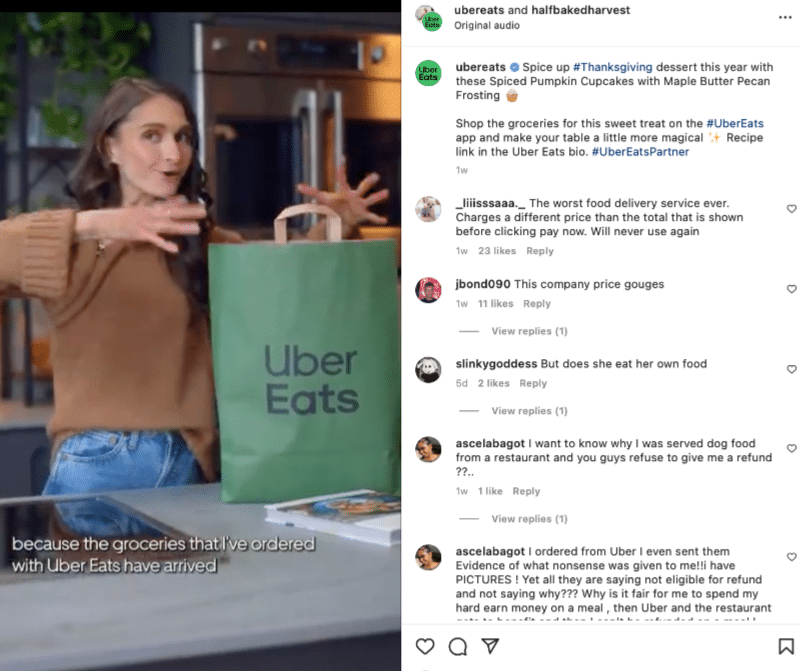
With 90% of consumers saying authenticity is important when deciding which brands they want to support, this is something to keep in mind.
And while influencer marketing UGC-styled content can undoubtedly help you drive a lot of visibility and sales, it does fall under a different level of trust compared to organic UGC. This is something you’ll want to keep in mind.
Two Potential Pitfalls of UGC
UGC does have two potential pitfalls, according to Saunder Schroeder, a previous Chief Marketing Officer at Disruptive Advertising, which you should keep in mind.
1. “PRODUCTION QUALITY AMATEURS”
Once you’ve seen how easy it is to let your customers do your marketing, you’ll be tempted to do a lot more UGC. The trouble is that you might not find suitable users to do it. That’s when the temptation to “supply your own” — or hiring actors to play the parts of your users — settles in. It’s not worth it.
UGC is rough around the edges. That’s part of its charm. If you introduce your own actors, your own production sets, your own quality lighting, you’ll ruin the very rawness that gives these video reviews their credibility. Your target audience will notice the acting or the lighting is a little too perfect, and it could have the exact opposite effect than what was intended.
2. MARKETING STAGNATION
Once a company presses the button on UGC and sees how well it works, they’ll want more. There’s no limit to profit, so when something really works well, why not do it again?
On the internet, though, content ages fast. What was fresh a few weeks ago may be boring now. What was innovative quickly becomes routine.
Your audience may have been impressed by last month’s video reviews and last month’s unboxing, but that tells you only about last month, not this month. This month could change the entire game. Before you realize it, your content’s outdated and unworkable.
Want to learn more? Click here to listen to Saunder’s full interview about UGC with Customers Who Click.

How to Utilize UGC In Your Marketing Campaigns
Looking for a few new ways to incorporate UGC into your marketing campaigns? Let’s take a look at 5 different ways to leverage UGC across different platforms, including email and PPC campaigns.
1. CREATE VIDEOS THAT INCLUDE UGC
Reels on Instagram and Facebook and TikTok videos are incredibly popular right now. Instagram Reels get more engagement than other types of videos on the platform, and TikTok’s videos have an exceptionally high average engagement rate of 6.72%.
Including UGC in your Reels and TikTok videos can therefore maximize the visibility it gets. Examples of how to do this include the following:
- Compiling a list of reviews into a single Reel
- Sharing the user’s public Reel and tagging them (as seen above)
- Featuring a UGC image or video and then discussing it more with someone from your team, like sharing additional product information or a purchase link
Remember to keep your UGC Reels and TikTok videos brief, and try to find a way to make them fun in order to maximize engagement, saves, and shares.
You can also use this same approach for YouTube videos, featuring user reviews or pictures in product videos. You can see an example of this on Tyme’s channel, where they showcase video calls where customers learn how to use the hair iron:
2. SHARE UGC IN YOUR FEED
You can’t go wrong with sharing UGC in your feeds as standard posts. This is particularly common on both Facebook and Instagram, but you can post the content to Twitter and Pinterest, too.
Sharing UGC in your feed should always involve a short description that tags the user and ideally thanks them for sharing. You can tag products if relevant, or highlight one of the product’s best features (think “@user432 taking advantage of our lightweight pants for a long hike”).
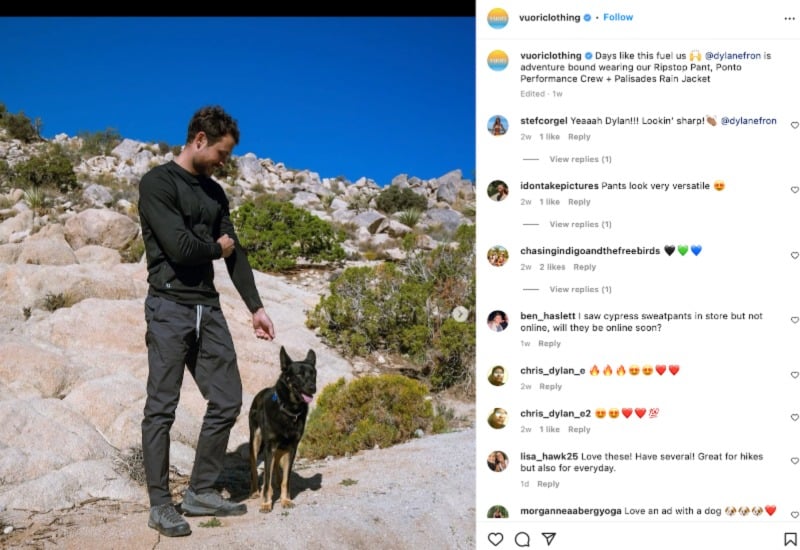
You can share images and videos, just make sure that they’re cropped to the right size for the platforms you’re sharing them to.
3. SAVE UGC STORIES TO HIGHLIGHTS
Sharing UGC to Stories on Instagram and Facebook is a common tactic, and Instagram’s Highlights feature allows you to save and display them all in one convenient, highly-visible location.
Users can see your Highlights when they first visit your profile page, making UGC Stories an outstanding option to build trust quickly with new users. You can name it something like “rave reviews” or, as seen below from Disruptive Advertising’s Instagram, “Success Stories.”
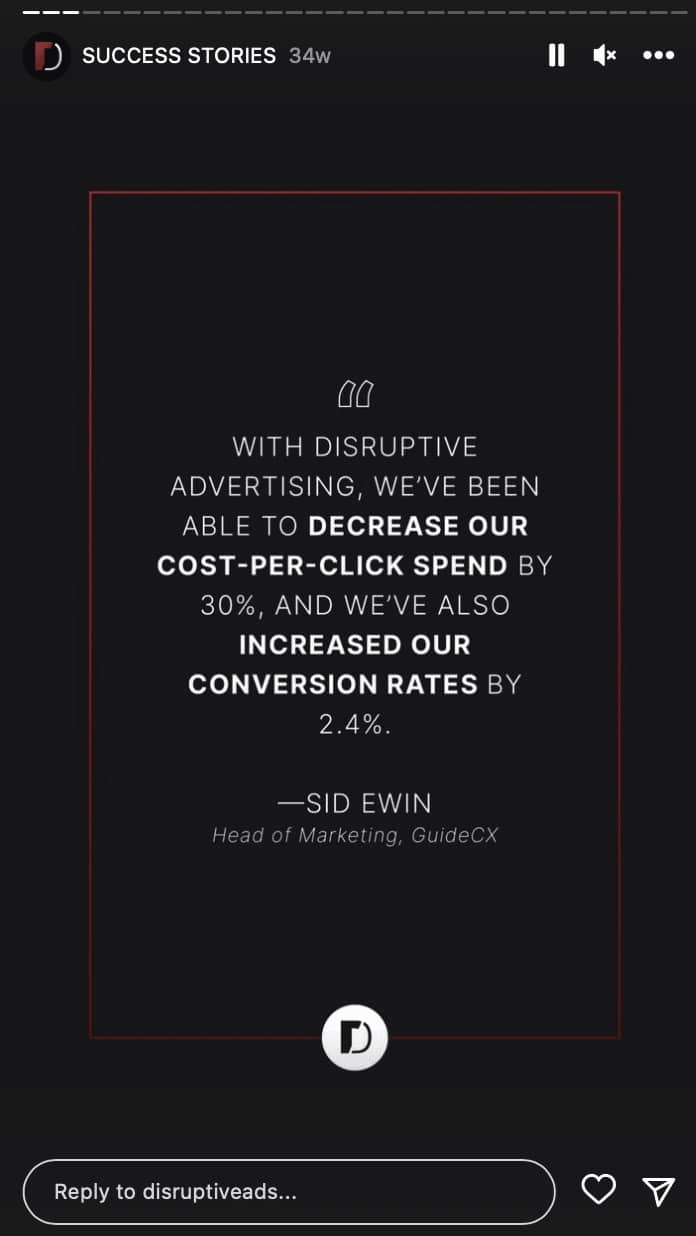
4. FEATURE UGC IN EMAIL CAMPAIGNS
Email marketing is a cornerstone of most brands’ overall marketing strategies, and incorporating UGC into your campaigns is a great choice.
The most common form of including UGC in email is to share snippets of reviews in quotes, but you can also share pictures shared by customers if you’ve gotten their permission to do so.
You can see a great example of this strategy in the snippet of an email here:
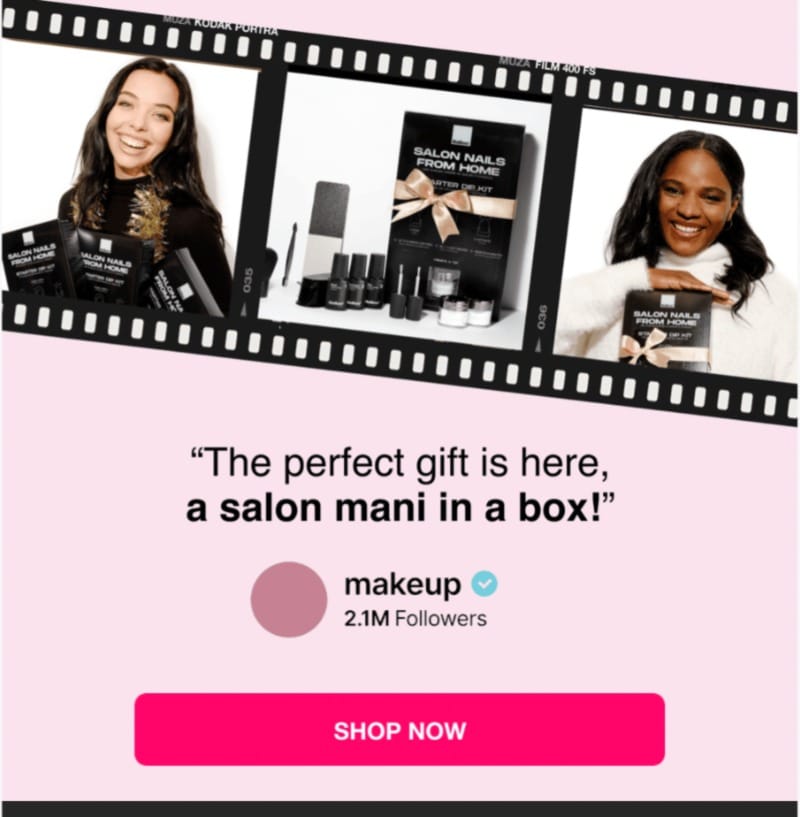
5. CREATE UGC-CENTERED ADS
The nature of UGC means that it’s trusted, respected, and attention-grabbing, which makes it an outstanding choice for pay-per-click ad campaigns. This is particularly true for social media ads.
UGC-centered ads are an outstanding choice for middle-of-the-funnel campaigns where you’re reaching users who are in the consideration stage of the digital sales funnel.
These users may know that they like the look of the products you offer, for example, but seeing a raving review from happy customers can be enough to drive clicks or build enough confidence to drive sales.
The most common use case here is using snippets of well-written reviews either in the ad copy or as text overlay in the image. This may be used with formal brand photographs or mobile-shot images and videos for an authentic feel.
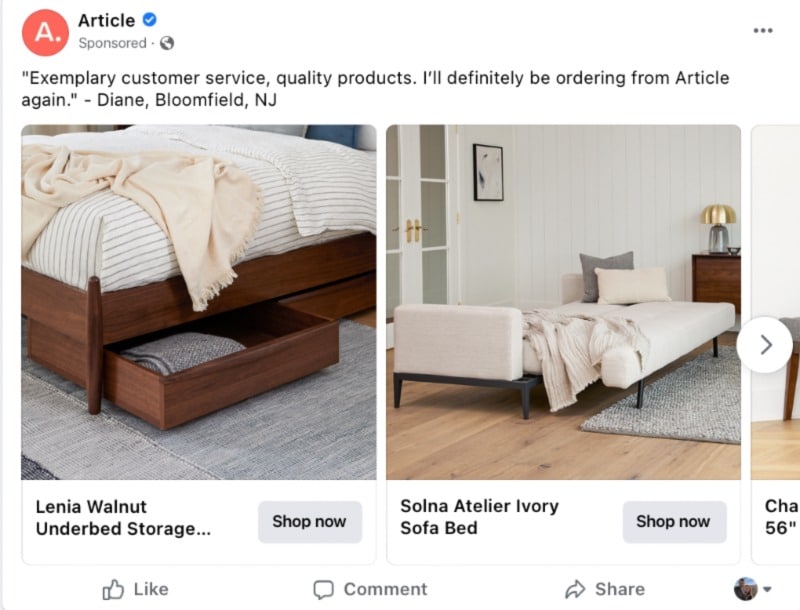
How to Drive More UGC
If you want to create more UGC-centered campaigns, it only makes sense to find ways to encourage more customer content.
Aside from sponsoring content creation through different influencers (which is really another post in and of itself), there are a few tactics you can use to get more “real” customers sharing.
All of the tactics come down to just asking for it.
A great start is to tell users what you want them to share, and how to share it. You can have forms on your site (either on each product page or in a single location).
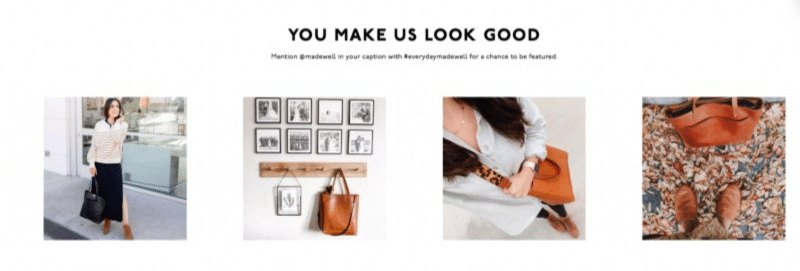
There’s also the option to mention it on Instagram, encouraging users to share using your branded hashtag. When users click that hashtag, they’ll see a feed of UGC specific to your brand, as you can see here:

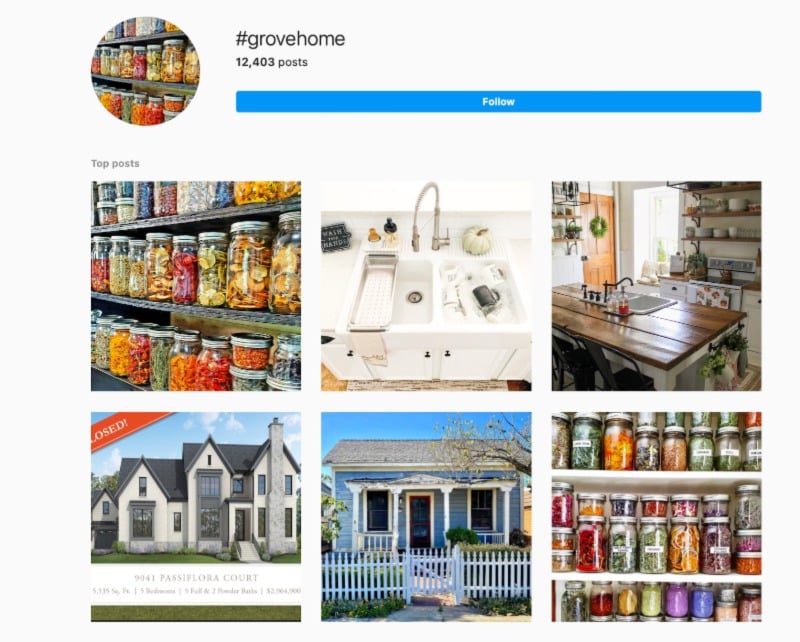
When sharing UGC on different platforms, you can make sure to mention that your brand loves UGC and that they can share to have a chance at getting featured.
Sending out an email campaign is also a great choice. Solicit reviews that can be featured on different platforms and shared on social media, and make sure to get permission from users to share the review publicly.
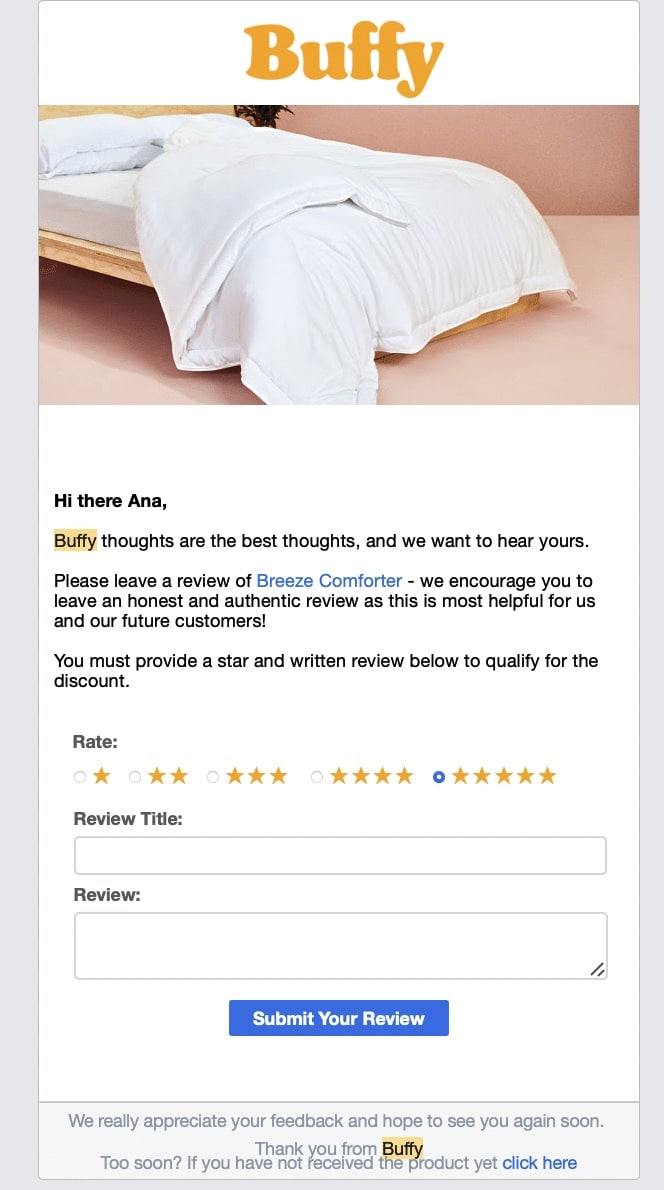
If you need to generate a ton of UGC quickly, you can always consider hosting a UGC-focused social media contest. You can ask users to submit reviews or pictures for a chance to win a prize like a gift card, free products, or free services.
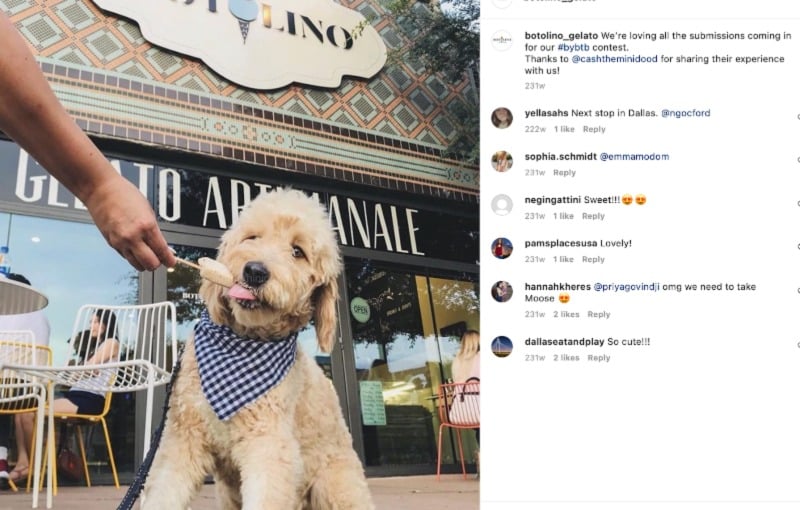
How to Find UGC
Wondering how to find more the UGC that users are creating? There are a few tried and true strategie to use:
- Solicit UGC. Ask users outright to send you the UGC that they’re sharing. Have forms available online, and tell them which hashtags to share the UGC under or accounts to tag. This will make it findable easily.
- Search for branded hashtags. Head to social media and search for any known branded hashtags, including just your brand name. This will help you find public images and videos that users may be open to you sharing.
- Use social listening tools. Social listening tools can help you find un-tagged and un-hashtagged mentions of your brand, and any UGC that goes alongside it. Mention is a personal favorite.
Final Thoughts
UGC is first and foremost a marketing strategy. It’s fun, but profit and visibility are its main purpose. Treat UGC seriously and test to see what works. All marketing revolves around testing ideas, analyzing results, and optimizing what works for round two.
Different companies operate best on different platforms with different audiences — there’s no “one size fits all.”
Ultimately, Saunder says, the best practices for user-generated content will vary from one situation to the next, but the trend is only going to continue to grow moving forward. Take a close look at your current marketing and look for more opportunities to add UGC to your promotions.
Need help taking your social media marketing ad campaigns to the next level? We can help. Learn more about our social ad services here.




